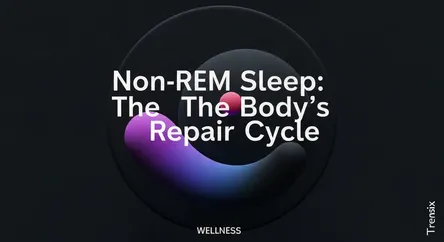Wellness
Non-REM Sleep: The Body's Repair Cycle

Discover the crucial stages of non-REM sleep, where your body repairs tissues, builds bone and muscle, and strengthens the immune system.
What is it?
Non-REM (NREM) sleep is a phase of the sleep cycle comprising three stages that make up about 75% of our total sleep. It progresses from N1 (light sleep) to N2 (slowing brain activity) and finally to N3, the deepest and most restorative stage known as slow-wave sleep. During N3, the body focuses on physical repair. We cycle through these stages before entering REM sleep, with deep sleep being most prominent in the first half of the night, setting the stage for bodily recovery.
Why is it trending?
The focus on non-REM sleep is surging due to the rise of wearable technology and a greater emphasis on wellness. Sleep trackers now provide detailed data on sleep architecture, allowing users to see exactly how much deep sleep (N3) they are getting. This has shifted the public's focus from mere sleep duration to sleep quality. As people seek to optimize their physical performance, mental clarity, and longevity, enhancing the amount of restorative deep sleep has become a key biohacking and wellness trend.
How does it affect people?
Non-REM sleep is critical for health. The deep N3 stage is when the body performs most of its repair work, like healing tissues, building muscle, and strengthening the immune system. Growth hormone is also released during this phase. Cognitively, it’s vital for consolidating declarative memories, which helps in learning and retaining facts. A lack of deep sleep directly impacts energy levels, leading to fatigue, a weaker immune system, and impaired cognitive function, affecting a person's overall ability to function well.